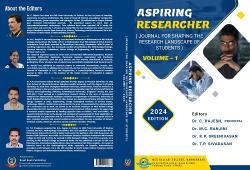Analysis of caffeine presence in chocolate products: A comparative study using UV spectroscopy
Abstract
Chocolate, a globally cherished confection, contains caffeine, a natural stimulant found in cacao beans. The research examines 30 chocolate samples, evenly split between those produced in India and the United Arab Emirates (UAE). The experiment was conducted by dissolving samples of chocolate with water and qualitatively analysed using UV-Visible spectroscopy, known for its precision and cost-effectiveness at a range of 200nm-400nm.The study reveals that 53.3% of Indian chocolates and 73.3% of Arabian chocolates contain caffeine, indicating regional differences in manufacturing practices or ingredient sourcing. Among four identical brands analyzed across both regions, only one brand maintained consistent caffeine levels, while others showed variability. These findings underscore the need for standardized production processes and regulatory oversight to ensure uniform caffeine content in chocolates globally. The results have implications for consumer awareness, regulatory bodies, and manufacturers, emphasizing the importance of accurate labelling and quality control. Future research should focus on quantifying caffeine levels, understanding regional differences, and evaluating the health impacts of caffeine in chocolates.









